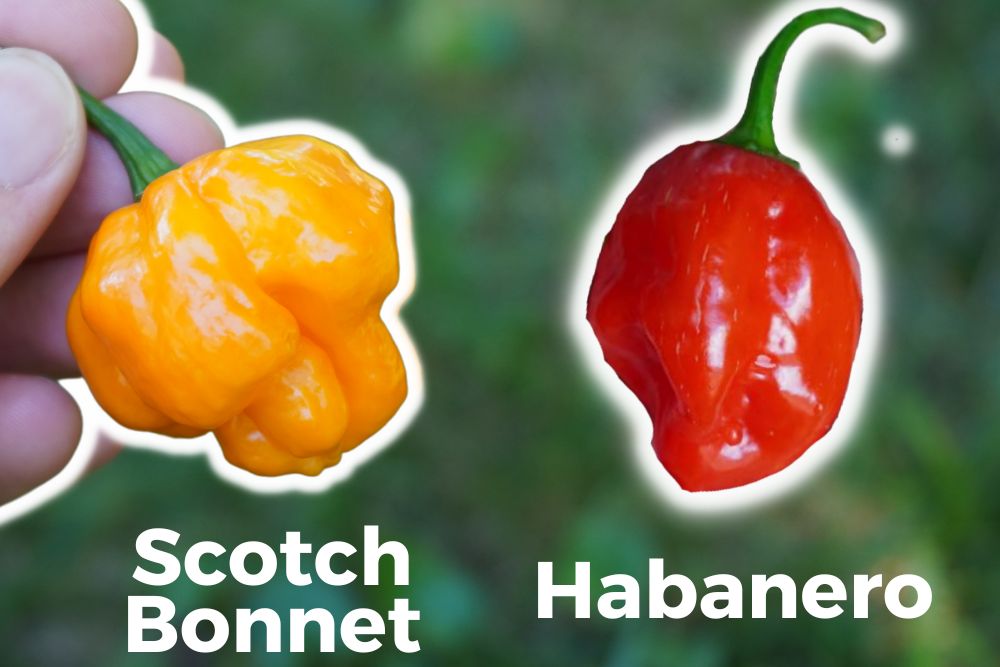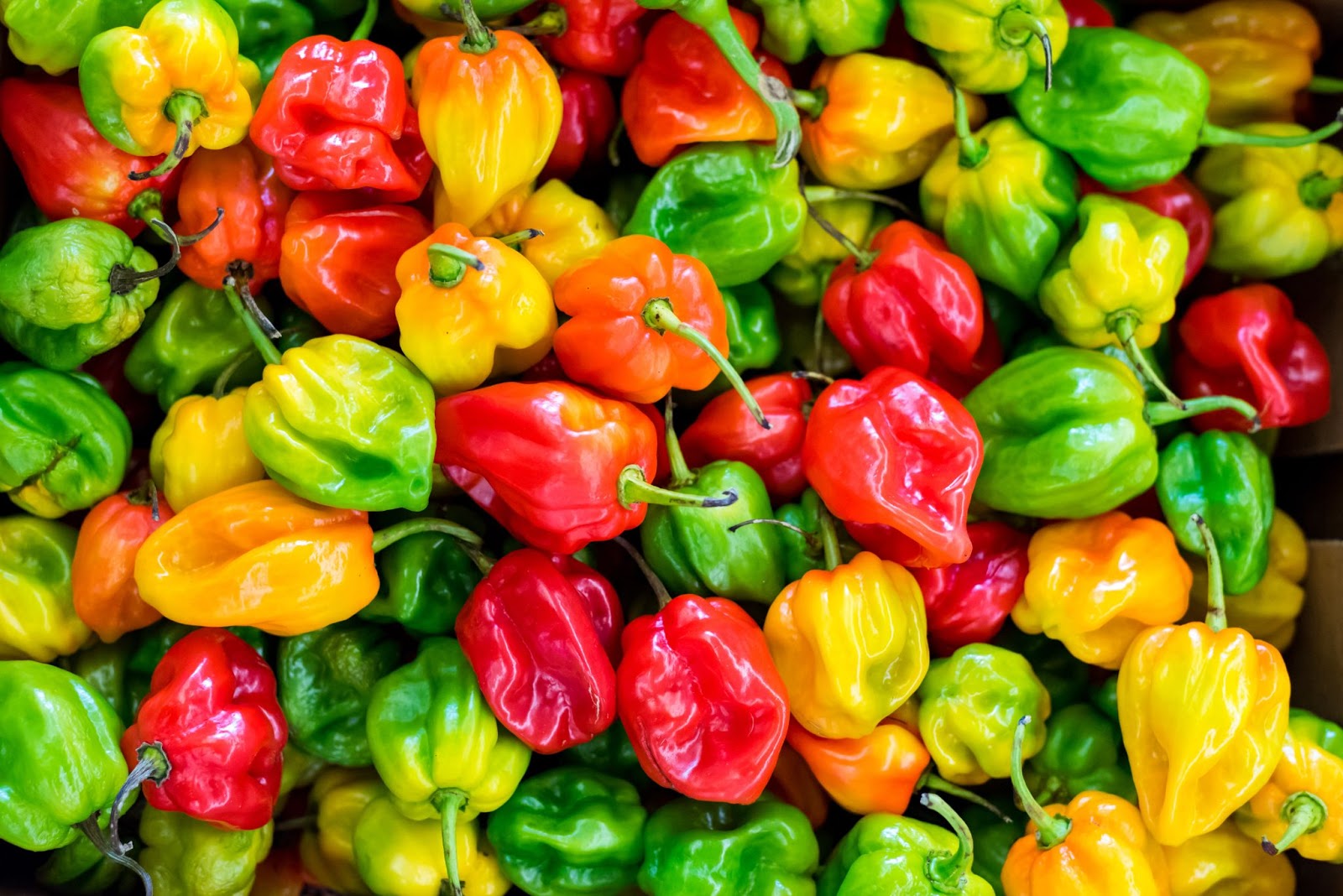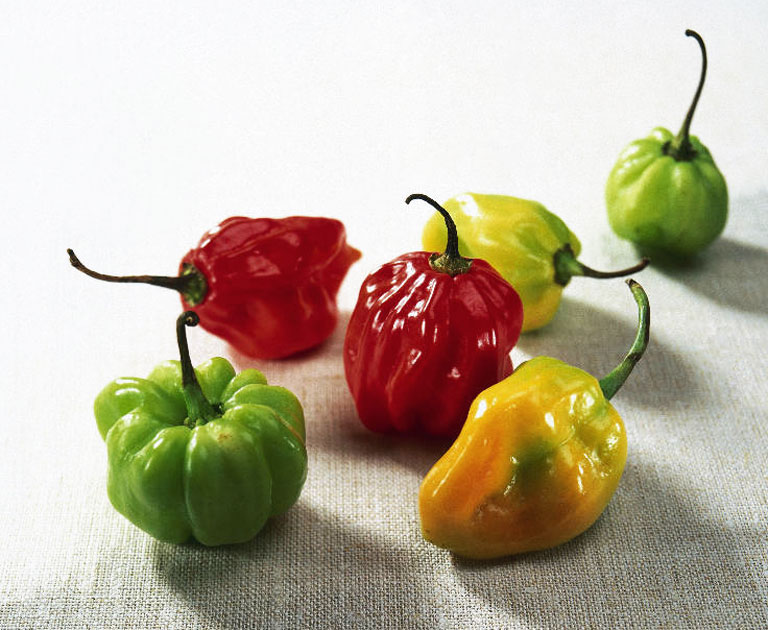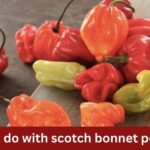The world of peppers is as diverse as it is spicy, with a myriad of varieties offering unique flavors, aromas, and heat levels. Among these, Scotch bonnet and habanero peppers often find themselves at the center of discussion due to their similar appearances and overlapping usage in cuisines. However, are they truly the same, or are there distinct differences that set them apart? In this comprehensive exploration, we delve into the origins, characteristics, flavors, and heat levels of Scotch bonnet and habanero peppers to unravel the truth behind their apparent similarities.
Origins and Historical Background

Scotch Bonnet Pepper
The Scotch bonnet pepper, scientifically known as Capsicum chinense, is a cultivar originating from the Caribbean islands, particularly Jamaica. Its name is derived from its resemblance to a traditional Scottish cap, with its squat, round shape and characteristic wrinkled skin. Scotch bonnets have been integral to Caribbean cuisine for centuries, featuring prominently in dishes such as jerk chicken, Jamaican hot sauce, and various seafood preparations.
Habanero Pepper
Similarly, the habanero pepper (Capsicum chinense) has its roots in the Caribbean, particularly in the Yucatán Peninsula of Mexico. The name “habanero” is believed to be derived from “Havana,” the capital of Cuba, suggesting a historical connection between the pepper and the region. Habaneros have been a staple in Mexican cuisine for generations, adding fiery heat and distinct flavor to dishes such as salsas, marinades, and pickled vegetables.
Key Differences in Appearance

Color:
- Habanero Peppers: Traditionally, habanero peppers are known for their vibrant orange or red hues when ripe. However, they can also appear in other colors such as yellow, green, or even brown, depending on their stage of ripeness and the specific cultivar.
- Scotch Bonnet Peppers: In contrast, Scotch bonnet peppers typically range from yellow to red when fully ripe. While they share some color variations with habaneros, Scotch bonnets tend to exhibit more shades of yellow, especially in their earlier stages of ripening.
Shape:
- Habanero Peppers: Habaneros are characterized by their distinctive elongated shape, tapering to a point at the blossom end. They often have a slightly wrinkled or ribbed surface, which adds to their visual appeal.
- Scotch Bonnet Peppers: Scotch bonnets, on the other hand, have a more squat, round shape reminiscent of a traditional Scottish cap, from which they derive their name. Their surface is typically more deeply wrinkled, giving them a textured appearance that sets them apart from habaneros.
Size:
- Habanero Peppers: Generally, habanero peppers are larger in size compared to Scotch bonnets, although there can be variations within each cultivar. Some habaneros may grow to be several inches in length, particularly in optimal growing conditions.
- Scotch Bonnet Peppers: Scotch bonnets tend to be slightly smaller than habaneros, with a more compact and rounded form. While they may not reach the same dimensions as some habanero varieties, Scotch bonnets are still substantial enough to pack a flavorful punch in culinary dishes.
Skin Texture:
- Habanero Peppers: The skin of habanero peppers is typically smooth, with a glossy appearance. Despite their fiery nature, habaneros have a sleek surface that reflects light, giving them an attractive sheen.
- Scotch Bonnet Peppers: In contrast, Scotch bonnet peppers have a slightly rougher texture, often featuring deeper wrinkles and creases across their surface. This textured skin adds to the pepper’s visual appeal and contributes to its distinct appearance.
Flavor Profiles
Habanero Flavor Profile

- Fruity Sweetness: One of the hallmark characteristics of habanero peppers is their fruity sweetness. When ripe, habaneros develop a rich, tropical flavor reminiscent of apricots, mangoes, or citrus fruits. This sweetness provides a pleasant contrast to the peppers’ intense heat, adding complexity to dishes.
- Floral Notes: Habaneros often exhibit floral undertones, contributing to their aromatic profile. These floral notes can vary depending on the specific cultivar and growing conditions but are generally present to some degree, enhancing the overall flavor experience.
- Subtle Smokiness: In addition to their fruity and floral qualities, habanero peppers may also possess a subtle smokiness, especially when roasted or grilled. This smoky flavor adds depth and dimension to dishes, complementing the pepper’s natural sweetness.
Scotch Bonnet Flavor Profile

- Citrusy Tang: The defining characteristic of Scotch bonnet peppers is their distinct citrusy flavor profile. Often described as having a zesty, tangy taste reminiscent of fresh-squeezed lemon or lime, Scotch bonnets bring a bright, refreshing element to culinary creations.
- Mild Floral Aroma: While Scotch bonnets may not have as pronounced floral notes as habaneros, they still retain a subtle floral aroma that adds complexity to their flavor profile. This delicate floral undertone enhances the overall sensory experience of dishes featuring Scotch bonnet peppers.
- Versatility with Fruity Flavors: Due to their citrusy nature, Scotch bonnet peppers pair exceptionally well with fruity ingredients such as mangoes, pineapples, and papayas. The tangy acidity of Scotch bonnets complements the natural sweetness of these fruits, creating a harmonious balance of flavors.
Comparing Flavor Profiles
- Fruity vs. Citrusy: While both habanero and Scotch bonnet peppers offer a combination of sweetness and heat, their flavor profiles diverge in terms of fruitiness versus citrusy tang. Habaneros lean towards tropical fruit flavors, while Scotch bonnets showcase a distinct citrusy aroma and taste.
- Aromatic Complexity: Both peppers exhibit aromatic complexity, with habaneros featuring floral notes and Scotch bonnets boasting a mild floral aroma alongside their citrusy tang. These nuances contribute to the peppers’ overall flavor profiles, making them versatile ingredients in a variety of cuisines.
- Pairing Preferences: Depending on the desired flavor profile of a dish, chefs and home cooks may choose to use either habanero or Scotch bonnet peppers. Habaneros are well-suited for recipes that call for tropical fruit flavors, while Scotch bonnets excel in dishes that benefit from a citrusy kick.
Heat Levels

- Similar Scoville Range: Both Scotch bonnet and habanero peppers are renowned for their fiery heat, which is measured on the Scoville scale. Typically, these peppers fall within a similar range of 100,000 to 350,000 Scoville Heat Units (SHUs), making them significantly hotter than milder chili varieties.
- Capsaicin Content: The intense heat of Scotch bonnet and habanero peppers is attributed to their high capsaicin content, the compound responsible for the sensation of spiciness. Capsaicin stimulates heat receptors in the mouth and throat, resulting in a burning sensation that can range from mild to intense, depending on the individual’s tolerance.
Variability in Heat:
- Genetic Factors: While Scotch bonnet and habanero peppers generally share a similar heat level, there can be variability within each variety based on genetic factors and cultivars. Some individual peppers may contain higher concentrations of capsaicin, leading to greater heat intensity.
- Growing Conditions: Environmental factors such as soil quality, sunlight exposure, and temperature can also influence the heat levels of Scotch bonnet and habanero peppers. Peppers grown in hotter climates or under stress conditions may develop higher levels of capsaicin, resulting in spicier fruits.
Exceptional Heat Varieties:
- Super-Spicy Cultivars: In addition to traditional Scotch bonnet and habanero peppers, there are cultivars known for their exceptionally high heat levels. For example, the Red Savina habanero is a cultivar bred for its intense spiciness, surpassing 500,000 SHUs on the Scoville scale.
- Crossbreeding and Hybridization: Over time, Scotch bonnet and habanero peppers may have been crossbred with other chili varieties, resulting in hybrids with even greater heat intensity. These super-spicy peppers, often referred to as “mega-hots,” can exceed 800,000 SHUs and are favored by chili enthusiasts seeking extreme heat experiences.
Culinary Considerations:
- Heat Management: When cooking with Scotch bonnet and habanero peppers, it’s essential to exercise caution and carefully manage their heat levels. Removing the seeds and membranes can help reduce the peppers’ spiciness, while incorporating dairy or acidic ingredients can help temper the heat in dishes.
- Balancing Flavors: Despite their intense heat, Scotch bonnet and habanero peppers offer more than just spiciness—they also contribute unique flavor profiles to dishes. Balancing the peppers’ heat with complementary ingredients such as sweet fruits, savory spices, or tangy citrus can create well-rounded flavor experiences.
Culinary Uses and Regional Preferences

Caribbean Cuisine:
- Scotch Bonnet Peppers: In Caribbean cuisine, particularly Jamaican, Scotch bonnet peppers are a staple ingredient in a wide range of dishes. They add vibrant color, intense heat, and a distinct citrusy flavor to iconic dishes such as jerk chicken, peppered shrimp, curry goat, and various hot sauces.
- Habanero Peppers: While not as prevalent in Caribbean cuisine as Scotch bonnets, habanero peppers are still used in some regional dishes, especially in Mexico’s Yucatán Peninsula. Habaneros contribute their fruity sweetness and fiery heat to salsas, marinades, and traditional dishes like cochinita pibil and habanero-infused pickled vegetables.
Mexican and Yucatecan Cuisine:
- Habanero Peppers: In Mexican cuisine, habanero peppers are prized for their intense heat and fruity flavor. They are commonly used in salsas, sauces, and marinades, adding a fiery kick and complexity to dishes such as salsa habanera, carne asada, and ceviche. In the Yucatán Peninsula, habaneros feature prominently in dishes like sikil p’ak (pumpkin seed dip) and escabeche (pickled vegetables).
- Scotch Bonnet Peppers: While less common in Mexican cuisine, Scotch bonnet peppers may occasionally be used as a substitute for habaneros in recipes that call for fiery heat and citrusy flavor. However, Scotch bonnets are not as widely available in Mexico as they are in Caribbean countries like Jamaica.
Global Fusion Cuisine:
- Cross-Cultural Influence: Scotch bonnet and habanero peppers have gained popularity beyond their respective regions of origin, thanks to the globalization of culinary trends and the growing interest in spicy foods. Chefs and home cooks worldwide incorporate these peppers into fusion dishes, combining Caribbean, Mexican, and other culinary influences to create innovative and exciting flavor combinations.
- Versatile Ingredients: Scotch bonnet and habanero peppers lend themselves to a variety of global cuisines, adding heat, flavor, and depth to dishes ranging from Asian stir-fries to African stews. Their versatility makes them valuable ingredients in the pantry of any adventurous cook looking to experiment with bold flavors and exotic spices.
Culinary Considerations:
- Heat Management: When cooking with Scotch bonnet and habanero peppers, it’s essential to exercise caution and balance their intense heat with other ingredients. Adjusting the quantity of peppers and removing seeds and membranes can help control the spiciness of dishes, ensuring they remain enjoyable for a wide range of palates.
- Flavor Pairings: Both Scotch bonnet and habanero peppers pair well with a variety of ingredients, including tropical fruits, citrus, garlic, onions, and herbs. Experimenting with different flavor combinations allows chefs to create dynamic and delicious dishes that highlight the peppers’ unique characteristics while complementing other ingredients.
Conclusion
While Scotch bonnet and habanero peppers share common ancestry and belong to the same species, they exhibit distinct characteristics in terms of appearance, flavor, and heat. While habaneros are prized for their fruity sweetness and intense heat, Scotch bonnets offer a unique citrusy tang that sets them apart in the culinary world. Whether used in Caribbean jerk marinades, Mexican salsas, or global fusion dishes, both peppers contribute to the vibrant tapestry of flavors that define contemporary cuisine. So, while they may be similar in some respects, Scotch bonnet and habanero peppers each bring their own distinct personality to the table, enriching culinary experiences and tantalizing taste buds with their spicy allure.





